easyRescue personal AIS SART, hands-on #1
After the Miami show this year I wrote about the introduction of Kannad and McMurdo personal-size AIS SARTs meant for crew overboard rescues and/or to help you get found in a liferaft. The idea is that these 1 watt AIS transmitters can be seen and homed-in to from at least a few miles away by any vessel — including your own — with an AIS plotting device. (Antenna height can increase that range a good deal, and that even includes satellites!) The first AIS SART I’ve gotten to test is the easyRescue A040 developed by the German company Weatherdock. It’s a brick-shaped device about 5 x 3 x 1 inches and it includes an optional back plate/belt clip and even a reel of thin line so you can leash it to your life jacket…
It turns out that the easyAIS — and maybe this is true of all AIS SARTs — is essentially designed for one-time use, like an EPIRB or PLB. That spring-loaded clear plastic button protector seen above is designed so that you can easily access the “Test” button, but to turn the unit “On” you have to push the protector up hard enough to break off that little red stopper seen in the photo below. The idea is to prevent false alarms, and also that you’ll send the unit in for a new lithium battery after actually using it.
If you click on the photo for a larger version, you’ll see that the battery is rated to stay good until 11/2015, quite like a PLB battery, and the manual (which you can download on the product page) say that it’s good for 96 hours of use. You’ll also see a unique Unit ID and Password printed on the back of the easyAIS. These can be used to access a database of owner information that Weatherdock maintains and shares with SAR authorities. This is completely optional as AIS SARTs are designed to be standalone and ready-to-use right out of the box, but I did fill in my contact info — which was fairly easy, though partly thanks to Google Translate — on the theory that if I do get into trouble the more information the authorities have about me the better.
At any rate, when I tried the Test function, the easyAIS indicated that its battery was fine and that it had acquired a GPS lock in about a minute, which is pretty good, especially given that it was on the fender of my truck with a fairly limited sky view. However, the test function did not include an AIS transmission, which has me a little confused as I thought a test SART message was designed into the system. But maybe that’s a feature that’s yet to be enabled (or that I’m misinformed about). {Mistake: The easyRescue in test mode does send a burst of “SART Test” messages before shutting down. See comments below.}
So I broke the red seal and actually turned on the SART. I had two Class B AIS transponders on and attached to a few devices. Most just saw the signal as a target without a name (but with an MMSI starting with “970”, which is exclusive to SARTs). On many boats that would set off a possible collision alarm if it suddenly appeared close astern, but the Lowrance HDS and Simrad NSE also threw up a useful message alarm as you can see on the screen below. None of the AIS plotters put up the special SART icon discussed in comments here, but remember that these things are pretty new and, in fact, none of the personal size ones like the easyRescue are yet FCC approved for use in the U.S. In fact, I think I better get squared away with the authorities, particularly my local Coast Guard station, before I do the further testing I’d like to 😉


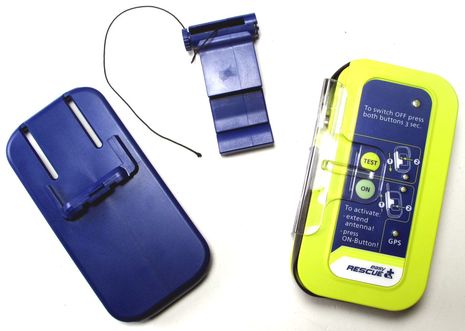
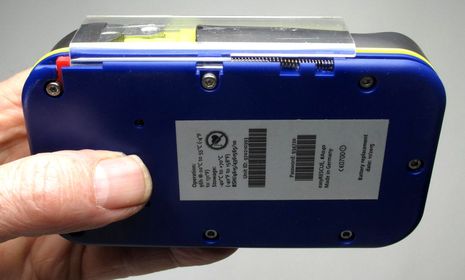
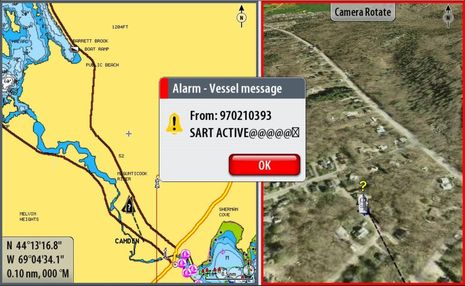
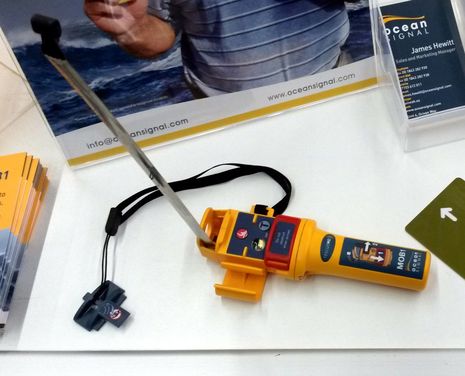
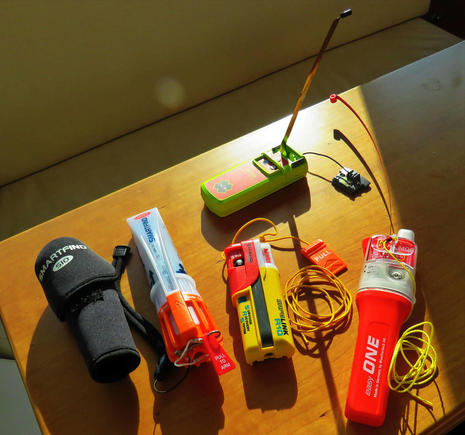
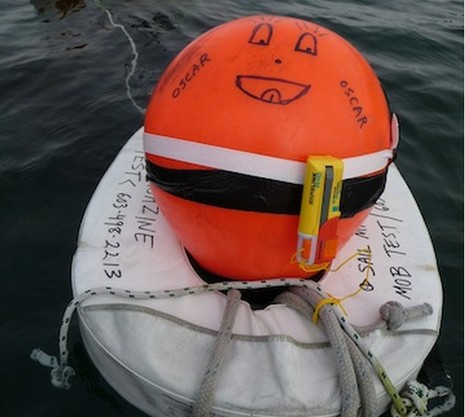
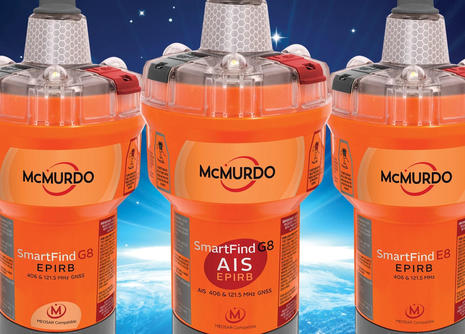







Actually Ben, AIS sarts are now fully accepted and integrated into the GMDSS system. The identifier is “970” rather then just “97”. The MED european directive is being updated to accomdate AIS Sarts, so that in Europe individual national approval will not be required.
The one concern is that the database really needs to be integrated into the national SAR records and not the preserve of the AIS SART manufacturer. What happens is that manufacturer isnt around in the future.
Dave
Thanks, Dave! I corrected the text to show the full “970” identifier. Weatherdock does say that they share their database with the German and UK Coast Guards ( http://goo.gl/TTiSN ) and I imagine they’ll extend that to other countries like the U.S. if and when they get FCC approval to sell here. But I agree that it would be better if an international SAR organization maintained a SART database.
I also think it will be a while before AIS SARTs are fully integrated into recreational marine electronics. What I saw in my brief and limited first test was that they do show up on any target display, but it’s obviously better if the display knows to alarm specifically for SARTs and/or display them in a special way.
I have had one of these for a few months now. Last time I checked, when testing I did get an alarm and message on my e140. (Identified as a test)
Thanks, Jeremy! You’re right; a more careful reading of the easyRescue manual indicates that once it’s gotten a GPS fix in Test mode, it transmits “eight AIS
messages” and then shuts down. Apparently I missed them, and will try again.
Might also be worth noting that even a test will trigger alarms on every MFD in the marina. 🙂 Probably should be used with care.
My concern is that most people don’t even know what a DSC alarm is, and merely showing up as an ais target, even one on a “Dangerous” course, isn’t going to get you much attention.
The SART active message above might help with commercial traffic, but my guess is most recreational boaters would only be annoyed and clear the message. They wouldn’t understand it’s a MAYDAY level report.
Still a good piece of gear with a lot of potential though!
Any idea of cost?
Ben, you commented that you did not receive anything when you put the easyRescue in TEST, which can be caused by that the AIS you use is updated with new firmware to be compliant with the new requirement in IEC 61993-2-ed2FDIS (which is not approved yet, but manufacturer expect that most will be implemented).
It says:
The active AIS-SARTs shall be displayed on the top of the target list. The testing (including type approval testing) AIS-SART should not be displayed or output on the PI during normal operation; however the AIS should have the capability to display and output on the PI the testing AIS-SART during periodical testing of own ship’s AIS-SART.
This means that AIS-SART test message is NOT forwarded to Chartplotter/ECS/ECDIS unless the AIS is in the special AIS-SART “TEST” mode.
Furuno has implemented this into the FA-150 with latest firmware, and you have to go into [USER SETTING]-> DISP SART TEST =ON to be able to receive the TEST transmission from the AIS-SART. Also described in this updated Bulletin on Jotron’s AIS-SART: http://support.jotron.com/admin/images/viewresource.asp?aid=2237
Fred
Thanks, Fred. I did learn that I was mistaken about the easyRescue sending test messages. It definitely does, just like a regular AIS SART. However, few recreational-level AIS target plotters do anything special with the AIS Sart target (yet) and many don’t display any AIS messages, let alone “SART Active” or “SART Test”. And I doubt that Class B transponder will ever have a special mode for SART testing as they generally don’t have their own displays. At any rate, I’ll be writing a follow-up entry on this soon.
I agree on your comments regarding Class B and recreational plotters , Ben.
Anyway, it is also now a suggestion in the latest spec. mentioned above to send a message from the plotter/ECS or ECDIS to the AIS to put it into that special “AIS SART TEST reception mode” through a “!–EPV…” (Command or report equipment property value)
I don’t know if this later will be suggested also for Class B spec, but if it did, I would find it useful as Plotter maker then more easily could send a command to the AIS to put it into the AIS-SART “Test mode”
AIS SART was developed (and proven) to be a more capable, cost effective alternative to Radar SART. SARTS are not the same as EPIRB/ELT/PLB, and should not be used or relied upon as such; they are homing devices not alerting device under the GMDSS. They assist first responder in locating the lifeboats/rafts of a mothership that has alerted Authorities that it is in distress; thus it does not have all the extensive ID requirements that distress device do. As 1/1/2010 it can be used in leiu of Radar SART to meet IMO SOLAS lifeboat (not ship) carriage requirements.
AIS SARTS by design are backwards compatible with existing AIS devices. They transmit the same position report message as an AIS Class A, but, with a Navigation Status = 14, which in legacy AIS systems will appear as a ‘reserved for future use’ field, but, in newer systems should indicate ‘SART ACTIVE’. Somewhat different to a Class A, which tranmits every 2-10 seconds (depending on course/speed), an AIS SART transmits in a burst of 8 messages every minute, hopefully ensuring that at least one message is sent a top the crest of a wave. They also aletrnate between both AIS channels to ensure their greatest reception. The 1st and 5th burst series, replaces 2 position reports with 2 safety related text messages (msg 14), one on each AIS Channel which states: SART ACTIVE. They are further differentiated from other AIS devices by their MMSI, which begin with 970, followed by a 2-diit CIRM munufacturers ID# and, 4-digit unit number. This MMSI is not user configurable.
Post 2009, IEC compliant/certified navigation displays (e.g. ECDIS, ECS, MFD) should portray an AIS SART as a circle with an “X” inscribed inside it. The circle shall be 5 millimetres in diameter. The symbol shall be drawn using a thick dashed line style with the colour red; that flashes until acknowledged by the user. NOTE: A radar SART has a receiver which scans for X-band radar signals. When the SART detects a signal, it transmits its own signal, consisting of a series of twelve pulses, on the same frequency. These pulses are displayed as a series of twelve echoes originating at the position of the SART and spaced 0.6 nautical miles apart along the line of bearing toward the edge of the screen. (IEC 62388 and 62288).
Work on AIS EPIRB/PLB/MOB devices is ongoing. Till then, we encourage all PANBO readers to read USCG Safety Alert 05-10 regarding the use of AIS in distress at http://www.navcen.uscg.gov/pdf/AIS/0510.pdf
U.S. Coast Guard
Office of Navigation Systems
So you need to get out an alert independent of AIS SART, so people know to come looking for you.
A thought. Perhaps future MFD’s or VHF radios will allow you to create a list of MMSI numbers for all your AIS SARTS, and should one of them become active:
– command your VHF radio to activate DSC alert
– command some future version of EPIRB, with the feature, to activate. Much like some EPIRBS now are able to grab the GPS lat/long using bluetooth, they could pickup info on the AIS SART, but take the next step to relay it.
Any word on availability of any of these personal AIS SART’s. I have a client down here in New Zealand who would love a few to have as MOB “tags” but so far it doesn’t seem like any of these are for sale yet. Thanks.
Hi Gram, I’m pretty sure that the EasyRescue personal AIS SART discussed here is fully approved and on sale in Europe, and perhaps everywhere else where the FCC doesn’t preside ;-). The same may be true of the McMurdo/Kannad sister products, though I don’t see much evidence on that on the Google.
There are two versions of the easyRescue on sale in Germany at the moment. The first version has manual activation where you slide a plastic frame off the unit and in doing so release an antenna that is folded around the unit. The antenna is like an aluminum window blind (flat and curved in cross section) so it will want to fold straight but not very much. I fear that it will be fouled by parts of the life vest or foul weather gear or blown down by strong wind. I’m not an engineer but I think if the antenna is partly submerged, the transmit power will the shorted to ground.
This version is EUR 349,90 at my favorite marine internet retailer http://www.svb.de. It’s currently on back order.
The other version is activated automatically on water contact. It’s EUR 489,90 and in stock.
This version of course cannot have the antenna folded around and so has a the same antenna cut short to about 3 or 3 1/2 inches and extending above the top of the unit at all times. There will be less or no problems with this antenna being correctly deployed but it is very short for the VHF band (where antenna length should be about 1 meter/3 feet). Handheld VHFs with a rubber stubby antenna have a coil around the core of the antenna to at least electrically get the correct length. On this unit, the missing length must be coiled up inside the unit where it will not help transmission much.
I just noticed a very interesting addition to this device which is a textile holder that matches Germany’s most widely used life vests. I think it will fit most life vests as it is tied around the inflated bladder. However, it is going to hold the unit and antenna horizontally if you are afloat in the water (you can find the image at http://www.svb.de if you select english language and search for “easyrescue”).
There is a much better solution for holding a transmitter up from a life vest done by live vest maker Secumar (see http://www.secumar.com/secumar/php/main.php?lang=e&group=php&seite=produkte&id=753&mnid=424). This is for a 121.5MHz transmitter so technically doesn’t compare at all but my point is how much better it is held vertical and above the water. That transmitter has a rubber stubby antenna comparable to a VHF handheld which will give much better transmission and the unit with antenna still fits inside the un-deployed life vest.
I’m somewhat frustrated that Weatherdock, the maker of the easyRescue, didn’t put the AIS SART technology in that case with that antenna and that holder for life vests.
Weatherdock has addressed the problem of alarming in it’s own AIS transponder “easyTRX2” by providing a wire pair on the transmitter to which you can connect a bell of some kind to alarm you completely independent of your chart plotter and even any signalling mode like NMEA0183 or NMEA2000. It will give you an audible alarm that an AIS SART is active. You will then need to find it on your AIS display as an AIS target.
Also, don’t forget a handheld DSC VHF radio a a mob device (Standard Horizon HX851 being the only one so far). It is a proper alarming device as per Jorge’s description above. It will provide the position, as does the AIS SART, at the time of alarm and repeated every 4 minutes until silenced by the coast guard. Even if it is silenced, you can set up your ship’s radio to poll the handheld’s position using DSC at any time you wish or even at set intervals. The polling is indepedent of the alarming (so can be used even just to find out where you left the handheld).
I see many advantages over an AIS SART and two major disadvantages:
– it is far more bulky and heavier
– it’s battery will wear down in about 8 hours so you need to constantly swap batteries.
SH does provide a charger and the charger will also hold a battery by itself (without the radio around it) so you can buy a couple of chargers and a couple of separate batteries. The charger takes unregulated 12V DC.
The radio is about half the price of the easyRescue so you can buy plenty of chargers and spare batteries for the money but, of course, this doesn’t free you of the hassle.
Does anyone know the state of play for Personal AIS SARTs? I found an FCC document from 2010 waiving rules to allow McMurdo to certify their AIS SART but the products seem to only be available in Europe, at typically exalted European pricing.
We leave for the South Pacific this spring and are hoping to use an AIS SART as a Plan B aid to man-overboard recovery. (Of course our Plan A is to NOT have to recover anybody.)
Cheers,
Richard D.
s/v RED
I don’t know, Richard, but I just searched the FCC Authorization database for Equipment = AIS and also for McMurdo = Applicant. Found nothing about AIS Sarts.
https://fjallfoss.fcc.gov/oetcf/eas/reports/GenericSearch.cfm
I was hoping to see the FCC become more transparent and faster under the Obama administration, but I see no signs of improvement.
Does the unit activate automatically when submerged in water? I am part of a pilot organisation and we require it to be water activated so that if the person is unconscious it will automatically start to transmit. A manually activated unit seams pretty useless!
What are your thoughts?
Mike, have a look at the Kannad R10 AIS MoB devices, discussed here on Panbo: http://goo.gl/lIKFOi
The R10 is auto activating when properly installed on certain models of auto inflating lifejackets, details here:
http://www.kannadmarine.com/us/safelink-r10
Quite frankly, though, I don’t think that beacon auto activation is a make-or-break feature. I can imagine how an auto inflate lifejacket can be a big help in the confusion of going overboard, but if you are so unconscous that you can’t then activate a personal AIS beacon or PLB, your survival chances are very slim.
The Weatherdock product “easyRESCUE-Automatic A049” does auto-activate if submerged in water for an uninterrupted 2 seconds. However, as Ben suggested, I would go with a model that is activated by the lifevest inflating as there is a much lower risk of accidental activation and, in any case, you will notice a life vest inflating under any and all circumstances while you might not notice a life vest getting wet to the point of activation – e.g. a life vest is not worn, is placed in a dinghy and water collects in the dinghy.